An attempt was made to understand the migration path of avian population and likely impact in the event the proposed site of NLST is in the avian migration path. This section discusses various paths as per the published literatures.
Bird Migration: Bird migration is the regular seasonal journey undertaken by many species of birds. Birds movement occours as a response to changes in food availability, habitat or weather. Irregular movements only in one direction are not migration but are called nomadism, invasions, dispersal or irruptions. Migration is tracked and recorded by its annual seasonality (Berthold, P., 2001). In contrast, birds that are non-migratory are said to be resident or sedentary. Approximately 1800 of world's 10,000 bird species are long-distance migrants (Sekercioglu, C.H., 2000).
The various geographical features, i.e. mountains, coasts and rivers, leads the migrating birds to travel certain general routes. Migratory routes are not fixed and in some species part of the population follows one route and parts another. In India, the winter migrants from central Asia and Siberia are thought to use two main routes; one in the west along the Indus valley and the other in the north-east along the river Brahmaputra. This is shown in fig. 51. Some migrants fly very long distances the examples being arctic terns which fly 15,000 km each way. Most flights occur at between 600 and 5000 ft above sea level with an average height of 1525 ft. However, mountains may mean greater heights are needed and heights over 10000 ft are not uncommon.
There is a very scant understanding and knowledge about how birds navigate. Most migratory birds have a built-in sense of direction due to which they know innately which direction they need to travel. Experiments conducted on starlings shows that when in first year Starlings in Europe were kept in a covered cage and away from birds which have already migrated once or more, still move to the correct side of the cage when the time comes for them to migrate. Some birds appear to use landmarks and obviously at a height of several thousand feet they can see a considerable distance. A number of elegant experiments involving and/or displacing birds to different geographical regions have shown that many birds use the sun, at least during the day, as a cue to direction when migrating or homing.
Birds of prey, Swallows and Crows migrate by day. Thrushes, Warblers, Cuckoos and Woodpeckers migrate by night. Wildfowl migrate both day and night. Most songbirds migrate at night. Experiments show that there is a hormonal stimulus to migrate, resulting, at least in the spring, in the development of the gonads. Other stimuli appear to involve temperature, daylight/darkness ratios and an internal clock.
Migrations mostly consist of birds flying south for the winter and north in spring to breed. To a large extent this reflects the distribution of the continents on the planets. There is a lot more temperate and tundra landscape in the north than in the south. Migrations to and from alpine areas are not uncommon, such as the Mountain Quail which breeds at heights up to 3000 m, but winters below 1500 m. Interestingly, the bird is flightless so it walks up and down the mountains in groups single file
General patterns: Many bird populations migrate long distances along a flyway. The most common pattern involves flying north in the spring to breed in the temperate or Arctic summer and returning in the fall to wintering grounds in warmer regions to the south (Figure 62)

Figure 62: Bird flyaway routes
http://www.wildlandfire.com/pics/other/bird_flyways.gif
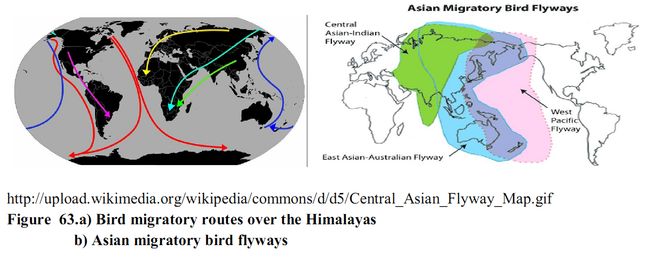
Figure 63a and 63b indicate the migratory route of some birds. The blue curve (in Figure 63 a) shows the route for Northern Wheatear (Oenanthe oenanthe), Bar headed goose (Anser indicus) and the green curve (in Figure 63 a) shows the route for Amur Falcon (Falco amurensis). The primary advantage of migration is conservation of energy. The longer days of the northern summer provide greater opportunities for breeding birds to feed their young. The extended daylight hours allow diurnal birds to produce larger clutches than those of related non-migratory species that remain in the tropics year round. As the days shorten in autumn, the birds return to warmer regions where the available food supply varies little with the season. Figure 64 shows the main routes of birds migration in the old world where massive birds migration take place twice a year, before the winter the birds fly from the cold continents Europe and Asia to the hot continent Africa and they do the return trip before the summer.
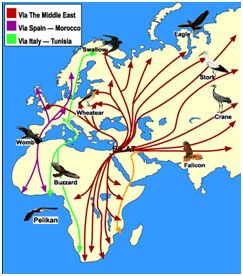
Figure 64: Retreat of birds from Africa to different parts of the world
http://www.holylandtime.us/joomla/images/stories/bird_migration_map.gif

Figure 65: Bird migratory route from the Arctic’s
http://arctic.fws.gov/images/worldbirdmigration.jpg
The birds seen in summer on Arctic Refuge migrate to all corners of the earth. The 6-inch Northern Wheatear travels approximately 13,000 miles one way from its breeding grounds on the Refuge, across Asia and the Middle East, to its wintering areas in Africa. The bird then travels a similar distance back to Alaska in the Spring. The Arctic Tern migrates almost the same distance (approximately 25,000 miles round-trip) but it flies in a different direction, traveling south to Antarctica to escape winter in the northern hemisphere. Tundra Swans that nest on the Refuge fly more than 4,000 miles east in the Fall, crossing North America to winter on the Chesapeake Bay. The Bar-tailed Godwit may have the longest non-stop flight of any bird. These shorebirds fly 7,200 miles across the open waters of the Pacific Ocean in a single, non-stop flight between Alaska and New Zealand during their Fall migration. On their return flight in the Spring, Bar-tailed Godwits rest for a month in Japan before returning to Alaska. The following birds are highlighted in Figure 65: Northern Wheatear to Africa, Bluethroat to southern Asia, Eastern Yellow Wagtail to Indonesia, Dunlin to Japan, Wandering Tattler to Polynesia, Bar-tailed Godwit to New Zealand, Arctic Tern to Antarctica, Sandhill Crane to western United States, Brant to western Mexico, Smith's Longspur to central United States, American Golden Plover to southern South America, Tundra Swan to Chesapeake Bay in eastern North America , Semipalmated Sandpiper to northeastern South America
These advantages offset the high stress, physical exertion costs, and other risks of the migration. Predation can be heightened during migration; the Eleonora's Falcon which breeds on Mediterranean islands has a very late breeding season, coordinated with the autumn passage of southbound passerine migrants, which it feeds to its young. A similar strategy is adopted by the Greater Noctule bat, which preys on nocturnal passerine migrants. The higher concentrations of migrating birds at stopover sites make them prone to parasites and pathogens, which require a heightened immune response. Within a species not all populations may be migratory; this is known as "partial migration". Partial migration is very common in the southern continents; in Australia, 44% of non-passerine birds and 32% of passerine species are partially migratory. In some species, the population at higher latitudes tends to be migratory and will often winter at lower latitude. The migrating birds bypass the latitudes where other populations may be sedentary, where suitable wintering habitats may already be occupied. This is known as leap-frog migration. Within a population, there can also be different patterns of timing and migration based on the age groups and sex. Only the female Chaffinches in Scandinavia migrate, with the males staying resident. This has given rise to the latter's specific name of coelebs, a bachelor.
Most migrations begin with the birds starting off in a broad front. In some cases the migration may involve narrow belts of migration that are established as traditional routes termed as flyways. These routes typically follow mountain ranges or coastlines, and may take advantage of updrafts and other wind patterns or avoid geographical barriers such as large stretches of open water. The specific routes may be genetically programmed or learned to varying degrees. The routes taken on forward and return migration are often different.
Many of the larger birds fly in flocks. Flying in flocks helps in reducing the energy needed. Many large birds fly in a V-formation, which helps individuals save 12–20 % of the energy they would need to fly alone. Red Knots Calidris canutus and Dunlins Calidris alpina were found in radar studies to fly 5 km per hour faster in flocks than when they were flying alone.
The altitude at which birds fly during migration varies. An expedition to Mt. Everest found skeletons of Pintail and Black-tailed Godwit at 5000 m (16,400 ft) on the Khumbu Glacier. Bar-headed Geese have been seen flying over the highest peaks of the Himalayas above 8000 m (29000 ft) even when low passes of 3000 m (10000 ft) were nearby. Seabirds fly low over water but gain altitude when crossing land, and the reverse pattern is seen in landbirds. (Swan, L.W. 1970; Dorst, J. 1963). However most bird migration is in the range of 150 m (500 ft) to 600 m (2000 ft). Bird-hit aviation records from the United States show most collisions occur below 600 m (2000 ft) and almost none above 1800 m (6000 ft).
In contrast, most species of penguin migrate by swimming. These routes can cover over 1000 km. Blue Grouse Dendragapus obscurus perform altitudinal migration mostly by walking. Emus in Australia have been observed to undertake long-distance movements on foot during droughts.
Theories related to Bird Migration: Bird migration is the mechanism behind the seasonal appearance and disappearance of some species of birds, mammals, fish and insects. In India and South Asia, out of over 2000 species and sub-species, about 350 are extralimital migrants. Generally, in birds, migration is seasonal, and in the Indian subcontinent the majority of migratory birds are winter migrants. In India, the physiology and mechanics of migratory bird flight are not very well known. The Bombay Natural History Society (BNHS) has been working since 1926 to rectify this shortcoming.
The first natural historian to write about migration as an observable fact was Aristotle. Aristotle noted that cranes traveled from the steppes of Scythia to marshes at the headwaters of the Nile. Pliny the Elder, in his Historia Naturalis, repeats Aristotle's observations. Aristotle however suggested that swallows and other birds hibernated. Aristotle was an astute observer and as well as recording the times of departure of some species from Greece, and listing Pelicans, Turtle Doves, Swallows, Quail, Swans and Geese correctly as migrants he accurately observed that all migrating birds fatten themselves up before migrating. This belief persisted as late as 1878, when Elliott Coues listed the titles of no less than 182 papers dealing with the hibernation of swallows. It was not until early in the nineteenth century that migration as an explanation for the winter disappearance of birds from northern climes was accepted.(Lincoln, 1979)Though Herodotus described the migration of Cranes from north of the Black Sea to Central Africa 100 years before.
The earliest recorded observations of bird migration were 3000 years ago, as noted by Hesiod, Homer, Herodotus, Aristotle and others. The Bible also notes migrations, as in the Book of Job (39:26), where the inquiry is made: "Doth the hawk fly by Thy wisdom and stretch her wings toward the south?" The author of Jeremiah (8:7) wrote: "The stork in the heavens knoweth her appointed time; and the turtledove, and the crane, and the swallow, observe the time of their coming."
The discovery in Germany of white storks embedded with African arrows provided early clues on migration. One of the oldest of these Pfeilstorch specimens was found in 1822 near the German village of Klütz, in the state of Mecklenburg-Vorpommern.
Navigation is based on a variety of senses. Many birds have been shown to use a sun compass. Using the sun for direction involves the need for making compensation based on the time. Navigation has also been shown to be based on a combination of other abilities including the ability to detect magnetic fields (magnetoception), use visual landmarks as well as olfactory cues. Long distance migrants are believed to disperse as young birds and form attachments to potential breeding sites and to favourite wintering sites. Once the site attachment is made they show high site-fidelity, visiting the same wintering sites year after year.The ability of birds to navigate during migrations cannot be fully explained by endogenous programming, even with the
In 1251 Matthew Paris writing in Hertfordshire recorded what is the first reference in England of the migration of Crossbills. By the 1600s good evidence had been supplied by the French ornithologist Pierre Belan to refute many claims of hibernation by the simple act of keeping the supposedly hibernating birds in a large aviary supplied with all the facilities it was claimed they needed to hibernate. None ever did.
It is important to remember that until the 19th century optical equipment was extremely rare, bird identification guides non-existent, travel to other countries difficult and expensive and bird ringing of course had not been invented. Moreover, in 1946 the Nuttalls Poorwill (Phalaenoptilus nuttallii) was found to be a bird that actually does hibernate; it does so in the Colorado Desert, California where it lives.
Scientific investigation of bird migration began in 1802 when birds were tagged with metal leg bands. It was not until this century when large numbers of bands with printed numbers and letters became available that this method really began to deliver results. The numbering of the rings is controlled by a national body in most countries and the rings have a contact address on them. These national bodies co-operate with each other in exchanging information on banding records (either live caught or found dead) of birds ringed outside the country in which they are caught.
Hundreds of thousands of birds are banded around the world each year, by amateurs and professionals. This work over the last 20 years has generated a lot of useful information. In India, it was only in the 1960s that effective bird ringing projects became possible.
Birds generally begin migration when they have a favorable tailwind. Once started however, only very bad weather will stop them. Many birds fly high when migrating because of prevailing winds at higher altitudes and also because the cold at these altitudes helps them disperse heat being generated by their flight muscles.
Timing of migration is a mix of internal stimulus which results in a feeding binge to put on fat to survive the journey and then the tendency to aggregate into flocks. Once the pre-migration flock is gathered, the feeding continues while the birds wait for suitable weather conditions. Thus while the birds' internal clock probably releases the hormonal triggers at a fairly accurate date each year, the availability of food and the presiding weather conditions decide when the migration starts and hence when we see the first spring migrants arrive and the last autumn ones leave help of responses to environmental cues. The ability to successfully perform long-distance migrations can probably only be fully explained with an accounting for the cognitive ability of the birds to recognize habitats and form mental maps. Satellite tracking of day migrating raptors such as Ospreys and Honey Buzzards has shown that older individuals are better at making corrections for wind drift.
Orientation and navigation: As the circannual patterns indicate, there is a strong genetic component to migration in terms of timing and route, but this may be modified by environmental influences. An interesting example where a change of migration route has occurred because of such a geographical barrier is the trend for some Blackcaps in central Europe to migrate west and winter in Britain rather than cross the Alps.
Migratory birds may use two electromagnetic tools to find their destinations: one that is entirely innate and another that relies on experience. A young bird on its first migration flies in the correct direction according to the Earth's magnetic field, but does not know how far the journey will be. It does this through a radical pair mechanism whereby chemical reactions in special photo pigments sensitive to long wavelengths are affected by the field. Note that although this only works during daylight hours, it does not use the position of the sun in any way. At this stage the bird is similar to a boy scout with a compass but no map, until it grows accustomed to the journey and can put its other facilities to use. With experience they learn various landmarks and this "mapping" is done by magnetite’s in the trigeminal system, which tells the bird how strong the field is. Because birds migrate between northern and southern regions, the magnetic field strengths at different latitudes let it interpret the radical pair mechanism more accurately and let it know when it has reached its destination (Wiltschko. et al., 2006) [20]. More recent research has found a neural connection between the eye and "Cluster N", the part of the forebrain that is active during migrational orientation, suggesting that birds may actually be able to see the magnetic field of the earth. (Deutschlander et al; 1999 Heyers et al. 2007)
The Indian migratory route: There are many earlier studies on world migration of birds, which essentially focuses on the new world birds in the west. However, not much understanding has been gathered on the migratory routes of birds in India so far. The pattern of migration shows movements of the birds from the Siberian region crossing the Trans Himalayas and even the mightiest greater Himalaya. Many cranes sp. as red crowned crane, bar headed goose (Figure 66) and the high souring raptors do cross these high ranges to enter India and finally leave towards Africa during the winters. The Siberian birds do also enter the country through the north eastern Himalayan ranges (Figure 66). This route traverses through the Western Ghats and southern parts of India before leading the birds to Africa (Figure 66).
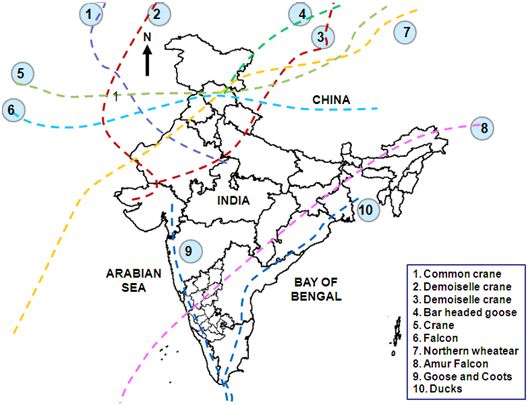
Figure 66. The migratory routes through India (not to scale)
There are also the birds which enter India from the north western side and from the Mexican region (Figure 66). Some birds do migrate along the eastern and the western coasts of the country to Africa and Sri Lanka. According to the geographical location in the Indian Continent, the land of Sri Lanka is situated at the extreme southern point beyond the south of India. The stretch of ocean from here to the south pole contains no other land. Hence, for the migrant birds that travel south from India, Sri Lanka is the final destination.
There are 3 flying routes across India along which immigrant birds come to Sri Lanka. These are – the western route, the eastern route and the Andaman Island route.(Figure 67). From the northern and northwestern parts of the world along the western coastal line of India, then towards the extreme south of India, which is common point the birds fly across this coast and arrive in Sri Lanaka mostly across this coastal line between Mannar and Kaluthara.
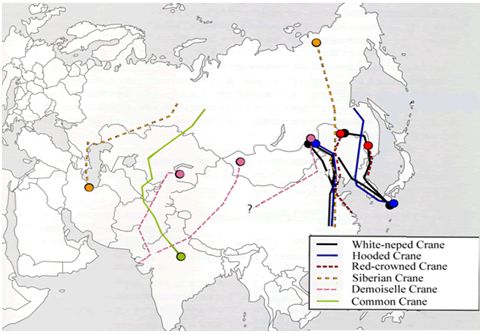
Figure 67: The Mexican and asia pacific migratory routes passing through India
http://www.birdlife-asia.org/crane/ch/migration
The migrant birds take this route initially from Europe, West Asia including Western Siberia, & from the western regions of Himalaya including Kashmir. From the northern and northeastern parts of the world, along the Eastern coast line of India, towards the south. Passing the coastline between Kalmier point and Ramesvaram, which is further south these migratory birds arrive in Sri Lanka from India, from East Asia which includes eastern Siberia and Mongolia, from the Eastern regions of Himalaya including Tibet, these migratory birds fly along this route initially.
Apart from the above-mentioned two routes there is still another route to the North Eastern coast of Sri Lanka, which is the Andaman Islands flying route. This route falls across the Andaman Islands in the Indian Ocean. It is believed that these migratory birds arrive in Sri Lanka along this route from south East Asia and the East each year. Each year the migratory season commences in October and ends in April – May in the following year. Very often, the birds take the same route they arrived. However, some birds return along different routes.
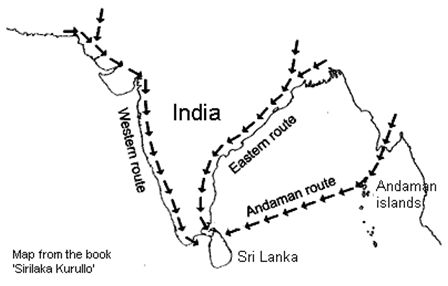 -
-
Figure 68: The migratory routes along the coasts of India
Source: http://www.walkwithjith.com/htm/itineraries_Migration.htm
Bar headed Goose: The Bar-headed Goose (Anser indicus) is a goose which breeds in Central Asia in colonies of thousands near mountain lakes. It lays three to eight eggs at a time in a ground nest. The summer habitat is high altitude lakes where the bird grazes on short grass. The species has been reported as migrating south from Siberia via the Qinghai lake region in China before its crossing of the Himalaya.(IUCN, 2006). The Bar-headed Goose is one of the world's highest flying birds, having been seen at up to 10,175 m (33,382 feet). It has a slightly larger wing area for its weight than other geese and it is believed this helps the goose to fly high. Studies have found that they breathe more efficiently under low oxygen conditions and are able to reduce heat loss.(William and Scott, 2008). The haemoglobin of their blood has a higher oxygen affinity than that of other geese.(Liu et al., 2001)
The Bar-headed Goose (Figure 69) migrates over the Himalayas to spend the winter in India, Assam, Northern Burma and the wetlands of Pakistan. It migrates up to Magadi wetlands of Gadag district of Karnataka in the southern part of India. The winter habitat of the Bar-headed Goose is on cultivation where it feeds on barley, rice and wheat, and may damage crops.
The bird can fly the 1000-mile migration route in just one day as it is able to fly in jet stream (Lee et al. 2008). The bird is pale grey and is easily distinguished from any of the other grey geese of the genus Anser by the black bars on its head. It is also much paler than the other geese in this genus. The adult is 71–76 cm (28-30 in) and weighs 1.87-3.2 kg (4-7 lbs). In flight, its call is a typical goose honking. It has sometimes been separated from Anser which has no other member indigenous to the Indian region, nor any at all to the Ethiopian, Australian, or Neotropical regions, and placed in the monotypic genus Eulabeia.
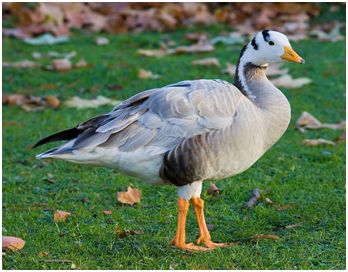
Figure 69: The Bar-headed Goose (Anser indicus)
They nest mainly on the Tibetan plateau. Intra-specific brood parasitism is noticed with lower rank females attempting to lay their eggs in the nests of higher ranking females (Weigmann, 1991).
Impact of the proposed activity on migrant avian population and mitigation aspects: Reports reveal that about five million birds, representing about 250 species (most of them are nocturnal migrants), fly through Chicago twice a year get confused with the night time lights of high rise buildings. These birds either crash into high intensity reflection of these buildings or get disoriented causing them to circle around and around, finally setting exhausted in a street tree or bush. These birds tend to fly into glass windows as they fly towards a reflection. Mitigation measures adopted by local residents are to dim or turn off decorative lighting late at night and to minimize the use of bright interior lights during migration season.
In this context, considering the proposed building height of NLST building and implementation of the suggested mitigation measures (- Shadow plate covering the primary mirror protects it from the vision of birds; change in angle to 30 degrees at the heat stop so that the reflection from the heat stop is diffused and directed towards a far off point in the ground and hence flying bird/birds are insulated from any reflections (Figure 3) and use of low energy ultrasound transmitters to ward off the birds around the telescope in an area of around half an acre) would minimise the impact on birds.